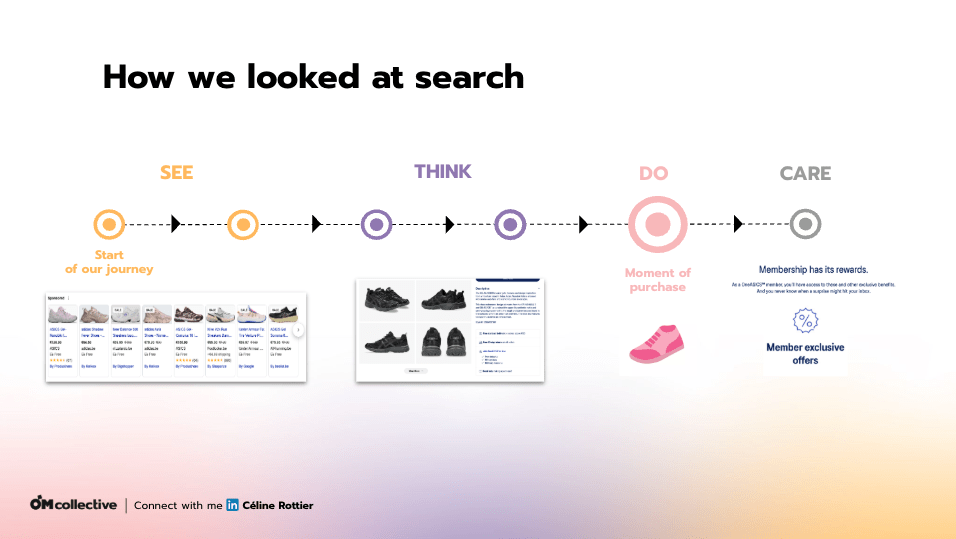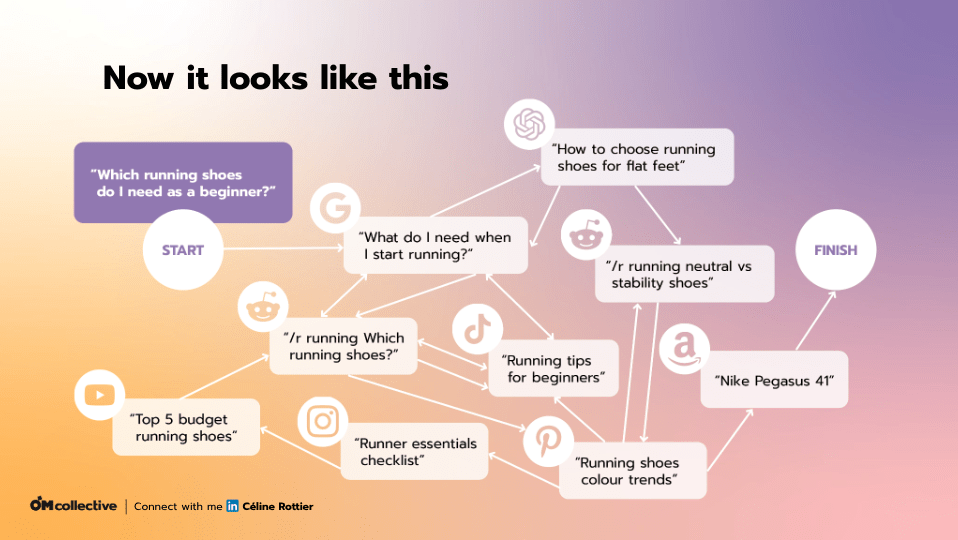5 insights to remember from Think Search 2025
 OMcollectivein collaboration with our SEO and GEO experts
OMcollectivein collaboration with our SEO and GEO expertsThink Search is the SEO meet-up OMcollective and JetOctopus hosted on 17 November. During this event, we brought clarity to a search landscape that’s changing faster than ever. We showed how AI, technical quality, and multichannel behaviour are shaping the future of search. In just one afternoon, it became clear what you need to understand today to stay visible tomorrow. These are the five insights that stuck.
TL;DR Think Search 2025 in 5 insights:
- SEO is increasingly about multichannel discoverability. Visibility now extends to TikTok, Reddit, YouTube and AI tools. Google hasn’t been the only channel to consider concerning SEO in a long time.
- SEO remains the foundation, despite AI. AI tools still pull search results from Google; strong SEO is crucial for visibility in AI.
- Credibility is key. AI values reliable, up-to-date information. Stay relevant by producing unique and human content.
- Technical quality still matters. Fast load times and server-side rendering are necessary for both AI and Google visibility.
- Internal linking is an untapped lever. A good internal linking structure boosts both SEO and AI visibility, and the impact is especially significant for larger websites.
1. SEO is increasingly becoming multichannel discoverability
People are now discovering information through TikTok, YouTube, Reddit, Pinterest, and AI tools as much as — if not more than — through Google. This shift requires a broader approach: spotting trends earlier, producing content in multiple formats, and tracking new metrics like saves, pins and AI mentions.
AI is also becoming more of a shopping tool. It helps make decisions, compares options, filters and suggests, all tasks that used to happen on websites but are now shifting to AI search. Your brand needs to be discoverable at every point where your audience searches or hesitates. Visibility is now an ecosystem, not a channel.
We also see AI becoming a full navigation layer in the customer journey. Especially in the orientation phase, AI touchpoints are taking over from traditional Google search results, blogs, or websites. Take the travel industry, for example: AI plans routes, filters options, and gives personalised suggestions.
2. AI is reshaping search fundamentally, but SEO remains the foundation
AI is not replacing search, it’s reshaping it. AI tools still rely heavily on signals from traditional search engines. If you rank well in Google, you automatically increase your chances of appearing in AI-generated answers.
SEO remains at the core of your digital visibility strategy, even in a world increasingly driven by AI. AI tools like ChatGPT and Google Gemini use existing search results as a reference to generate answers. This makes SEO structure, content, and technical optimization more important than ever. When your website is well-structured, performs well, and offers valuable, optimized content, you increase your visibility not only in search engines but also in AI-driven systems as a trusted source.
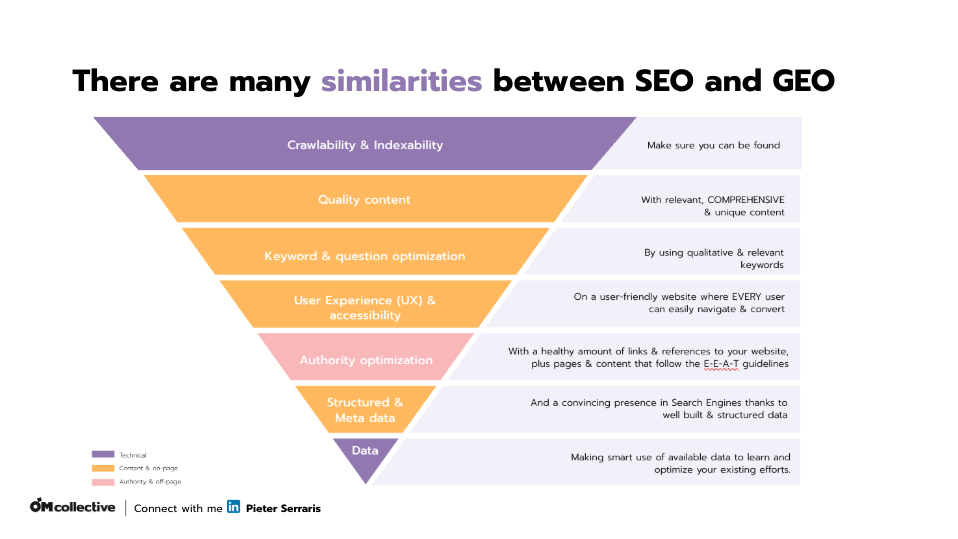
Additionally, people trust AI responses more than ever. More than 77% of users say they trust AI answers as much as or even more than traditional search results.
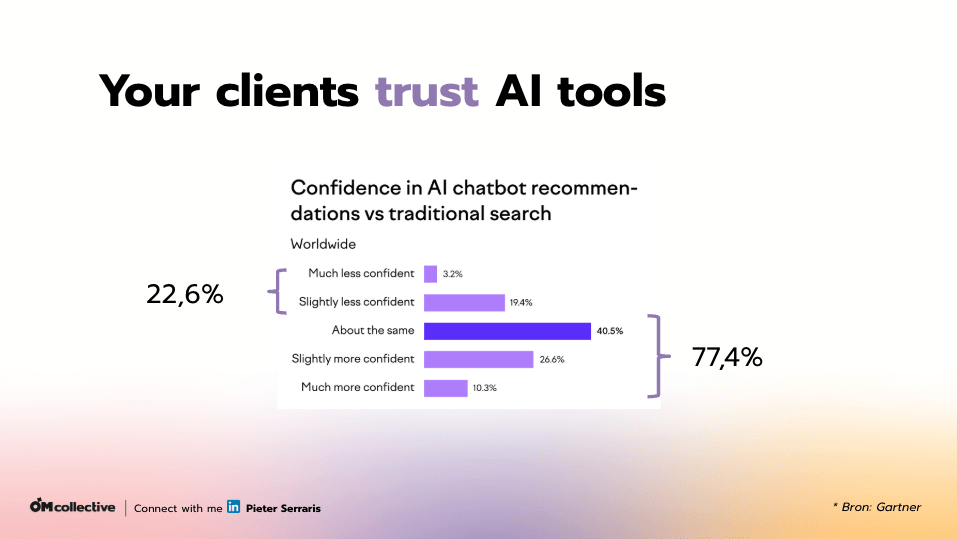
3. Credibility is key
AI systems favour recent, unique and reliable information. Outdated or generic content is rarely included in AI responses.
Human content remains crucial. The sweet spot: AI for efficiency, human input for nuance, unique insights, expertise and trust.
Brands that keep their content up to date and visibly showcase their expertise become more relevant. E-E-A-T is not just a theory, it’s a visibility filter, even for AI.
It also helps to build your content like an answer engine. Both users and AI bots scan the first hundred words to decide if you’re the right source. Start with a clear answer and add nuance and context later. Then, work out follow-up questions logically and support them with examples.
Building content as a series of answers helps both people and AI move forward faster. FAQs, scenarios and short formats work well, especially when you tap into trends or questions circulating on communities like Reddit or TikTok. Clarity wins. Brochure-style doesn’t.
4. Log file analysis provides genuine insights into how AI bots crawl
Different types of bots visit your site in their own ways, but they all want the same thing: efficiency and stability. Fast loading times, clean HTML and server-side rendering remain significant factors.
To get insight into how these bots crawl your site, you should look at your log files. Log file analysis is an underused goldmine of insights. It reveals your AI visibility, shows how crawlable your site is for both AI and Google bots, and helps you identify popular topics that can drive further growth.
For large websites (> 10,000 pages), one insight that stuck with many attendees is that log files are the only reliable way to monitor crawl budget. Only through log file analysis can you see which tens of thousands of URLs bots visit that offer no value. This wastes crawl budget, slows down the discovery of new content, and impacts your ranking potential.
And none of this works without good collaboration. Regular communication between SEO teams and developers makes all the difference. Technical visibility is a team effort.
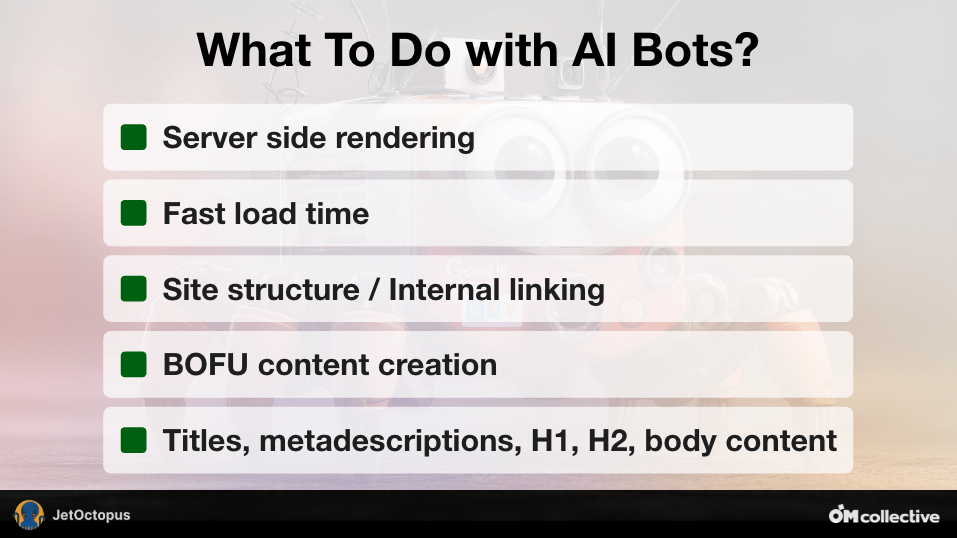
5. Internal linking is an untapped growth lever
Many websites underestimate the power of internal links. They are critical in determining how bots interpret your site’s relevance and depth. There’s likely significant opportunity here that you’re missing.
Adding a smart internal linking layer on top of your existing structure can create quick wins, without having to completely redesign your site. Make it easier on yourself: build a system that allows you to adjust internal links through a simple CSV upload on a regular basis.
A well-organised internal linking structure allows strong pages to pass on their power to weaker ones. For large sites and e-commerce platforms, the impact can often be immediate. Log file analysis can help here too: it shows you which pages are easily found and which are not, so you can decide which pages need more links.
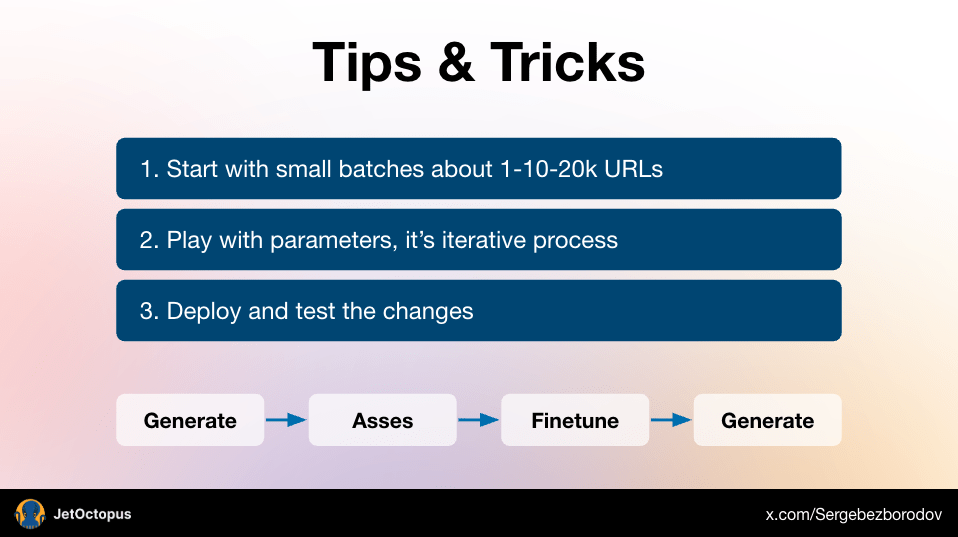
Conclusion
Think Search showed that the future of SEO isn’t about abandoning old habits. It’s about reinforcing the fundamentals. AI and multichannel discoverability make visibility more complex, but they also offer huge opportunities for brands that have their foundation in place. Keep investing in technical quality, stay relevant and credible, and adapt to the new ways people discover information. The SEO of the future is dynamic, layered, and demanding, but with the right strategy, you’re ready for what’s coming next.

